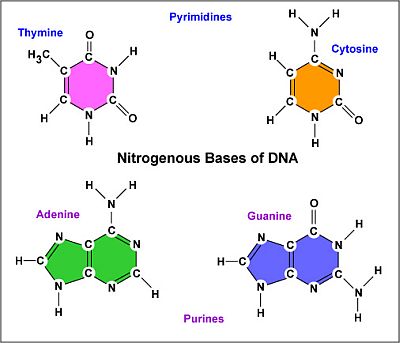JillsWingsOfLight May 15 2014
 Four base DNA molecules were measured by a scientific team: adenine, cytosine, guanine and thymine. Each molecule after being subjected to light, yielded about 15 or 18 frequencies; 60 in all. These notes could not be found on our pianos. The tuning system on ordinary keyboards is an artificial one, based on and adapted from the natural harmonic series.
Four base DNA molecules were measured by a scientific team: adenine, cytosine, guanine and thymine. Each molecule after being subjected to light, yielded about 15 or 18 frequencies; 60 in all. These notes could not be found on our pianos. The tuning system on ordinary keyboards is an artificial one, based on and adapted from the natural harmonic series.
Around the time of J.S. Bach, equal temperament as a favored tuning system came into being to solve the problem of modulating through different keys. (Bach did not entirely welcome it. Its sound was inferior to the sweet concordances of just intonation).
Equal temperament divides the keyboard octave into twelve equal parts, assigning a measurement of 1200 cents to the octave, with each half-step being 100 cents. Half-steps are of course fixed on the piano, but a violin could play a variety of c#s, anywhere from 50 cents to 99 cents away from the original C, and then 50 cents above the c#. These are defined as microtones, and are often considered harsh and out-of-tune to our Western ears. Other cultures such as those of the Middle East, Asia and India have been creating music with microtonal scales for centuries.
The four individual DNA bases – adenine, cytosine, guanine and thymine – have similar ratio relationships, or the distances between the separate ‘pitches’ within each base. If they are arranged from lowest frequency to the highest, there is about a 2 and l/2 octave span for all four with a noticeable gap of a Major 6th/minor 7th. (Intervals on the keyboard are named seconds, thirds, sixths, and sevenths, depending on how many steps they are away from the beginning note, or tonic. A Major 6th in the scale of C would be C to the sixth note, or A, above, and a minor 7th would be C to B flat above. In addition to major and minor intervals, we also recognize the Perfect fourth (C to F), the Perfect fifth (C to G) and the tritone (C to F#), the interval, which cuts the scale perfectly in half.)
These smaller, microtonal intervals, are difficult to listen to, but they create beats. Beats occur when two frequencies are extremely close together…within a few hertz of each other such as 254 and 257 Hz…two very slightly different middle Cs. The frequencies will be heard as the same pitch, C, but slightly out-of-phase. The phasing results in occasional louder moments, or “wa-wa” beats, when they do phase together. To the ear this bears a striking resemblance to the quality of ‘aliveness.’……or organic movement found in any living process.
These are some of the fascinating sounds in Susan’s Sequentia…DNA Music!
Next week we will wrap up our discussion about the incredible DNA music!
 Adventure into the world of healing with Sound! Healing Sounds, Videos, and Art! Marvel at a new type of music targeted for benefits! Music was used in this way in antiquity. Special frequencies expand our consciousness, musical intervals, rhythms and harmonics may be directed to produce special effects! Paint your Soul CD – Fibonacci and phi tones and ancient Solfeggio tones are embedded in this soul soothing music! Star Dust CD – Music of the movements of the planets and trace elements of in the star converted into sounds in this healing music! Also the associated frequencies of carbon, hydrogen oxygen and nitrogen – found in the stars and in our bodies. Healing Flower Symphonies Vol. I and Vol. II -Soul therapy by listening to the sounds of flower energy! Frequencies and music to clear negative emotional energy and build positive feelings!
Adventure into the world of healing with Sound! Healing Sounds, Videos, and Art! Marvel at a new type of music targeted for benefits! Music was used in this way in antiquity. Special frequencies expand our consciousness, musical intervals, rhythms and harmonics may be directed to produce special effects! Paint your Soul CD – Fibonacci and phi tones and ancient Solfeggio tones are embedded in this soul soothing music! Star Dust CD – Music of the movements of the planets and trace elements of in the star converted into sounds in this healing music! Also the associated frequencies of carbon, hydrogen oxygen and nitrogen – found in the stars and in our bodies. Healing Flower Symphonies Vol. I and Vol. II -Soul therapy by listening to the sounds of flower energy! Frequencies and music to clear negative emotional energy and build positive feelings!
